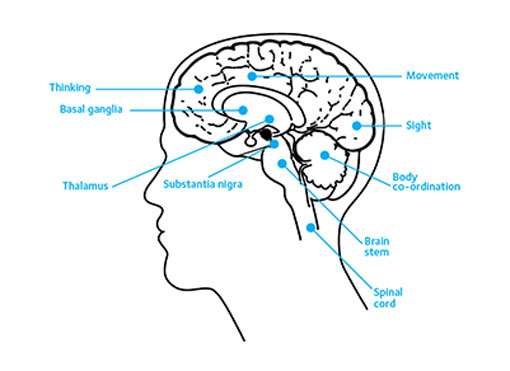1.5 What causes Parkinson’s?
Currently scientists don’t know exactly why people get Parkinson’s, but research suggests that it’s a combination of genetic and environmental factors that cause dopamine-producing nerve cells to die.
Most people with parkinsonism have idiopathic Parkinson’s disease, also known as Parkinson’s. ‘Idiopathic’ means that there is no known cause.
Genetic factors
It is rare to find more than one person in a family with Parkinson’s. Parkinson's can be hereditary, but it is very rare for it to run in families.
In fact, even if a person has a genetic susceptibility to Parkinson’s, it is not guaranteed that they will eventually develop the condition. Scientists believe that the condition is only triggered following exposure to other factors.
Environmental factors
There is some evidence that environmental factors (such as toxins) may trigger dopamine-producing nerve cells to die, leading to the development of Parkinson’s. Several toxins have been shown to cause symptoms similar to Parkinson’s. There has been a great deal of speculation about the link between the use of herbicides and pesticides and the development of Parkinson's.
Dopamine
Dopamine is a neurotransmitter or chemical messenger. It transmits messages between our brain and our muscles to help us perform movements like standing up or sitting down and sequences of movements like getting out of bed and going downstairs. These actions are all made up of lots of movement sequences – we just don’t tend to think of them like that.
Dopamine is produced and stored in a small part of the brain called the substantia nigra. This is located within the basal ganglia, deep in the lower region of the brain, on either side of the brain stem.
Figure 1.1 shows the substantia nigra – the small part of the brain where dopamine is produced and stored.

Motor skills require learned sequences of movements that combine to produce a smooth, efficient action for a particular task. It is the role of the basal ganglia to coordinate and control these learnt, voluntary and semi-automatic motor skills. The body uses dopamine as a signal between the brain and the muscles to help these movement sequences happen.
That’s why a lack of dopamine means that people can have a great deal of difficulty controlling their movements.
Dopamine also contributes to thinking and memory (cognitive processes), such as maintaining and switching focus of attention, motivation, mood, problem solving, decision making and visuospatial perception (our ability to process and interpret visual information about where objects are). These are some of the reasons why Parkinson’s can cause symptoms such as depression or anxiety. It is also why it can be difficult for people with Parkinson’s to move through a crowded room without bumping into other people or objects.
People show symptoms of Parkinson’s when about 50% of their dopamine-producing nerve cells have been lost.
The animation below shows the difference between what the middle section of the brain of someone without Parkinson’s looks like with dopamine still present and what the same section of the brain would like in someone with the condition.
(The animation is also available as a PDF file [Tip: hold Ctrl and click a link to open it in a new tab. (Hide tip)] .)
You can download this resource and view it offline. It may be useful as part of a group activity.
1.4 What is Parkinson’s?
